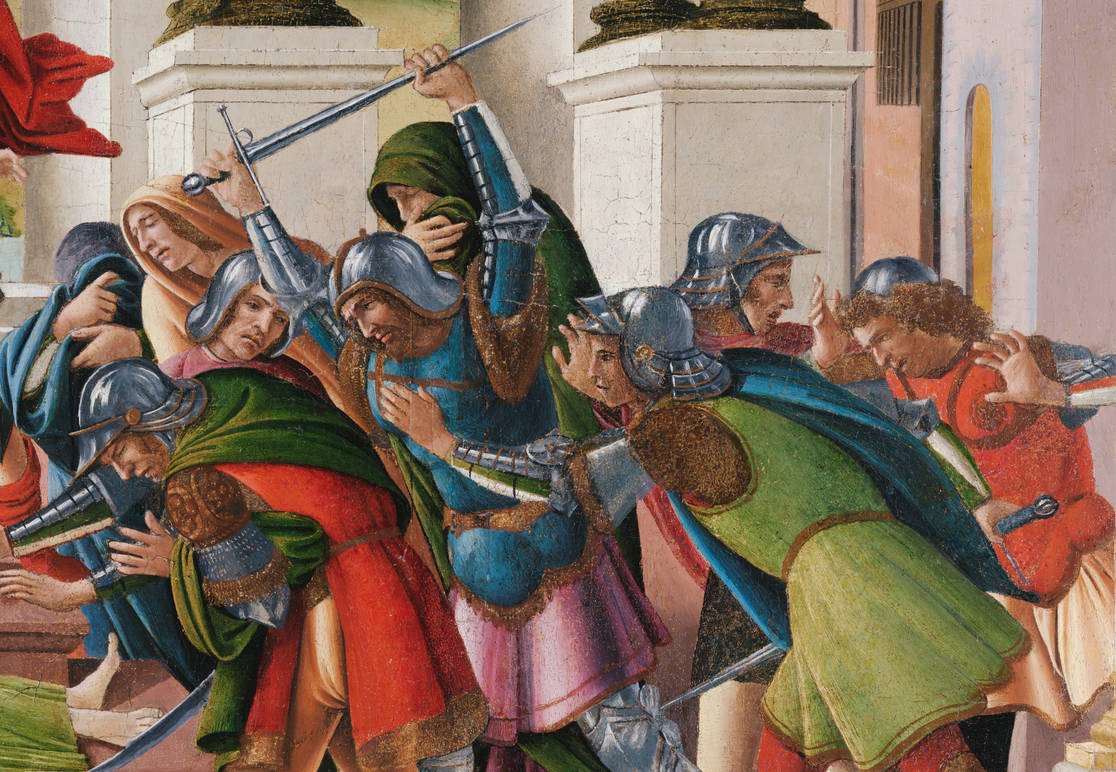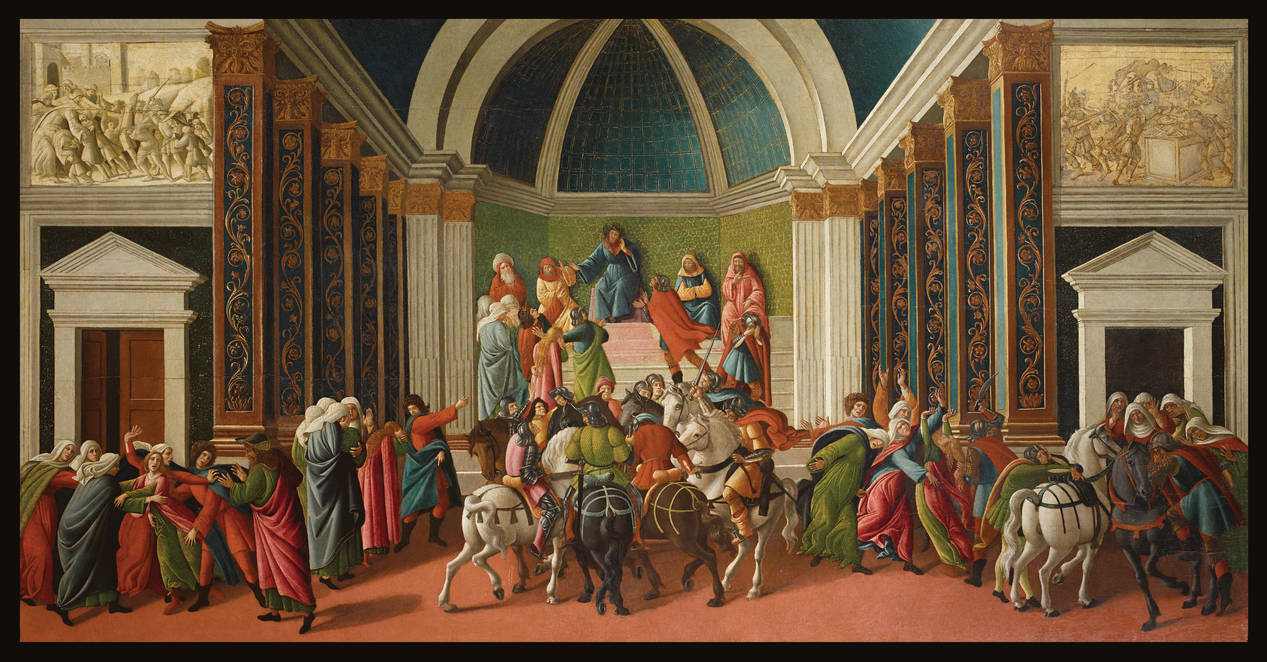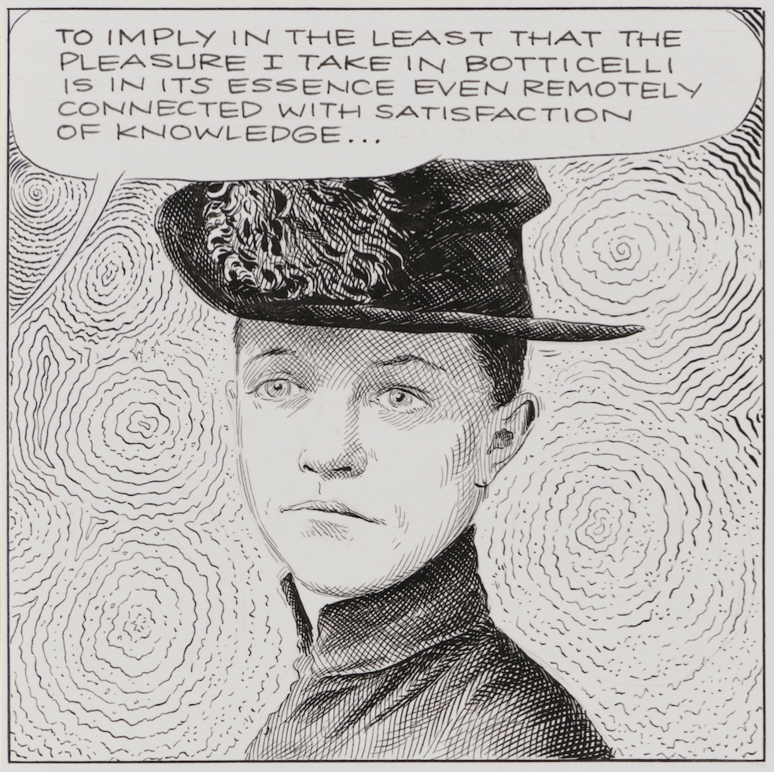Botticelli Unexpected: Violent Storyteller in New Exhibit in Boston
“It is the first time that these paintings get loaned. Usually, this type of large-scale works on wooden panels, which are much more fragile and difficult to transport than canvas, never travel - especially, if they are Botticelli works. It is a very complicated and risky process so we had to take incredible, special measures to transport them. The Primavera and The Birth of Venus never leave the Uffizi Gallery in Florence, for instance. It took us over three years to organize this exchange,” explains Nathaniel Silver, the Gardner’s William and Lia Poorvu curator of the collection.
Silver first thought about this incredible reunion after having seen “Virginia” in the early summer of 2015 in Bergamo. “ ‘Lucretia’ is one of the most important pieces of the Gardner collection but no exhibition has ever been organized around it. Presenting it with ‘Virginia’ seemed to us the perfect opportunity. It was possible only thanks to our colleagues in Bergamo who were open to the reunion.”
Indeed, these two paintings were originally purchased together in 1500 by the Vespucci family and were supposed to be hung in the same room. They are both "spalliere" — a new kind of painting for the mid-1400s, of horizontal, rectangular format and mythological or allegorical subject, hanging on a shoulder level and made for the homes of wealthy or noble patrons ("Spalla" means shoulder in Italian).
“They were supposed to teach moral and political lessons. All the eight pieces of this exhibition are spalliere coming from different museums” says the curator. The exhibition also reunites three of four panels from another spalliera depicting the story of the early Christian saint Zenobius, celebrated in Florence as the city’s first native bishop.
They come from the National Gallery in London, and the Metropolitan Museum of Art in New York. Also, in display, Botticelli’s unfinished Adoration of the Magi, on loan from the Gallerie degli Uffizi, in Florence.
In the spalliera paintings, Botticelli reinvented ancient Roman and early Christian heroines and heroes as role models, transforming their stories of lust, betrayal, and violence into parables for a new era of political and religious turmoil.
Thus, Silver underlines that in this exhibition visitors will find “an unexpected Botticelli, not the painter of beautiful Venuses and Madonnas, but the storyteller of complicated and violent stories that had resonance in the Renaissance. To help our audience to better understand how to read these stories we asked a contemporary artist, the New Yorker magazine catoonist Karl Stevens, to retell the stories of Virginia and Lucretia through cartoons that appear alongside the two paintings.”
As Botticelli, like a modern graphic novelist, envisioned episodic stories with multiple scenes featuring the same protagonist, so Stevens created up-to-date interpretations of the painter’s Renaissance masterworks.
A special section of the exhibition explores the acquisition of The Story of Lucretia with never-before-exhibited photographs, books, and letters from the Gardner Museum archives. When Isabella Stewart Gardner brought this masterpiece to Boston in 1894, it was the first Botticelli in America and the first major Renaissance painting in her collection.









































i-Italy
Facebook
Google+
This work may not be reproduced, in whole or in part, without prior written permission.
Questo lavoro non può essere riprodotto, in tutto o in parte, senza permesso scritto.